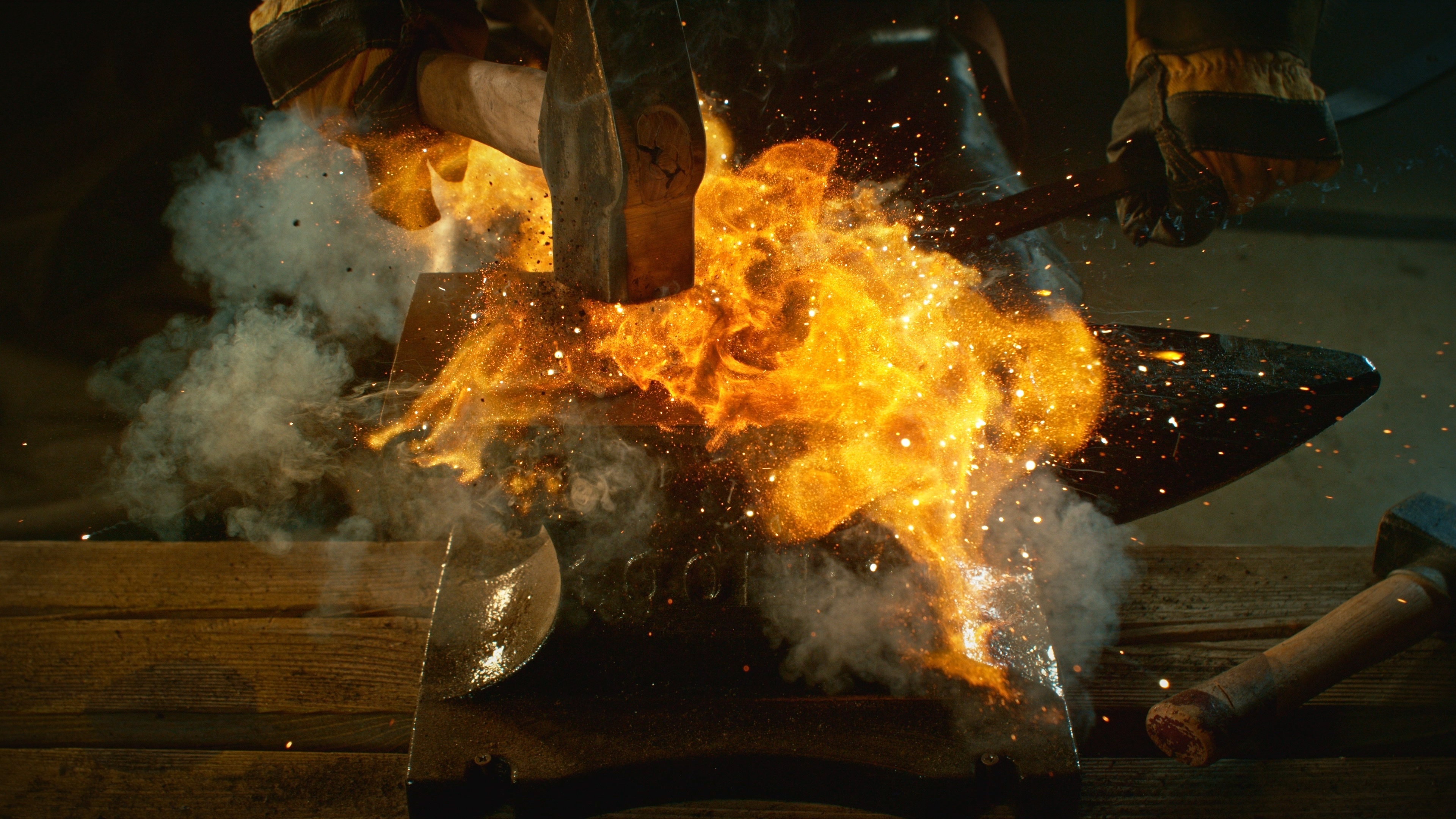
2025 Week 34
Brace yourselves. We’re going to talk about jurisdiction. And then about hair curling.
So far, the UPC has applied a generous approach to its own jurisdiction. The most significant decision to date by the UPC had been Fujifilm v. Kodak by the Local Division Düsseldorf, deciding that the UPC would have jurisdiction over a defendant domiciled in Germany in relation to infringement of the UK part of a European patent (see UPC Weekly 2025 w5). This principle was confirmed shortly afterwards by the CJEU in landmark decision BSH v. Electrolux, which explained how that should work, and how the court should deal with a counterclaim that the relevant patent was invalid.
The key point in Fujifilm and also in BSH was that the defendants were domiciled in the same country as the location of the court. So, with respect to the UPC, this simply confirmed that the court has so-called “long arm” jurisdiction over “its” defendants.
Now we have a further extension of this. In Dyson v. Dreame, the Local Division Hamburg decided that it has jurisdiction over a defendant based in Hong Kong in relation to alleged infringements of the Spanish part of the European patent. Spain, like the UK, is not part of the UPC. But Spain is of course a member of the EU, which was significant in this case.
Bear in mind that the UPC Court of Appeal (CoA) has not yet given its view about long arm jurisdiction, and has not decided whether it needs CJEU input on that. If and when these issues reach the CoA, the course will be set for the territorial reach of the UPC.
We’ll look at jurisdiction first, then some interesting points about claim interpretation.
Jurisdiction when there are multiple defendants from different countries
The Fujifilm case was an easy fact set, in the sense that all of the defendants were domiciled in the same country and the court’s task was to assess only whether it could have jurisdiction over those defendants’ activities outside the UPC.
Other cases working their way through the UPC are best described as “jurisdiction spaghetti”, with anywhere between 15 and 30 defendants, having different national and international roles in the alleged infringement.
In this Dyson v. Dreame case, there were 4 defendants with various domiciles – a fact pattern which is just complex enough to throw up some interesting issues. The defendants were all part of the Dreame group of companies and had different roles in relation to the infringing products – hair styling products, sold online and in physical retail stores. The key question was whether the UPC had jurisdiction over the alleged infringements of the Spanish part of Dyson’s European patent.
The table below summarises the domicile and activities of the different defendants, and how the court decided on jurisdiction inside and outside the UPC territories.

Jurisdiction for D2 and D3 was easy for the court to establish, this being based simply on the domicile of these defendants in Germany, meaning that the Local Division Hamburg was competent to hear the case.
D4 is not domiciled in Germany, but is domiciled in another UPC state (Sweden). Therefore the LD Hamburg also had jurisdiction on the basis that it should be efficient to hear this case together with D2 and D3, in relation to the same infringing products and in view of the relationship between the defendants.
The court had jurisdiction over D1, not based on its domicile (Hong Kong), but in relation to the location of the alleged infringements in the UPC states.
Up to here, the approach of the court simply followed the expected norms of UPC jurisdiction.
For the allegations of infringement in Spain, the court followed the precedent of Fujifilm and BSH to assert jurisdiction over D3’s activities in Spain. D3’s role is interesting, in that it served as the EU authorised representative for D1, under the relevant EU legislation on the sale of consumer electrical products manufactured outside the EU. The court decided that this role made D3 an indispensable party in the alleged infringement.
Breaking new ground, the court decided that it had jurisdiction over D1 for the alleged infringement in Spain. This is based on the close connection between D3 and D1 in relation to the activities in Spain, and D3 serving as an “anchor defendant” for D1.
Note that the outcome on jurisdiction would have been different if D3 had not been domiciled in a UPC state. If, for example, D3 had been domiciled in Poland (inside EU but outside the UPC) then the court seemed to acknowledge that it would not have had jurisdiction over D1 in relation to the alleged infringement in Spain. This is an interesting point for company groups to consider for their corporate structures.
The substance of the case
EP 3119235 B1 was granted in April 2025 after a long process of examination by the EPO involving many sets of observations on patentability filed by third parties, which interestingly relied exclusively on prior art originating from the patent proprietor. The patent is in force for the UPC states and also Spain.
The patent relates to an attachment for a hot styling brush hair care appliance. Claim 1 is below.
- An attachment (30) for a hand held appliance comprising a body having a wall, a fluid inlet at one end of the wall and a fluid outlet through the wall,
wherein:
the fluid outlet comprises a slot (102, 202, 282) extending along the wall,
the slot (102, 202, 282) is formed by an overlap of a first end of the wall and a second end of the wall,
the attachment (30) is tubular,
the slot (102, 202, 282) extends longitudinally along the tubular attachment (30),
hair is wrapped around the attachment (30) in the direction of fluid flow,
the fluid emitted from the fluid outlet is attracted to an external surface (112) of the wall, and
fluid emitted from the fluid outlet flows around the external surface (112) of the wall.
.png?width=638&height=359&name=Untitled%20(19).png) The alleged infringing products from Dreame were referred to as the AirStyle Pro, the Pocket Neo (shown below), the AirStyle and the Pocket (shown below).
The alleged infringing products from Dreame were referred to as the AirStyle Pro, the Pocket Neo (shown below), the AirStyle and the Pocket (shown below).
Dyson were seeking a preliminary injunction (PI) for the UPC states and for Spain.
Relevance of file wrapper to claim interpretation
The court carried out a detailed interpretation of the features of the claim defining the slot, from which the air flows to wrap, dry and style hair. They considered whether it was appropriate to refer to the file wrapper from EPO prosecution. Following the approach of the UPC CoA in Alexion v. Samsung (see also UPC Weekly 2025 w2), the court states that the granting procedure is not by itself relevant for the interpretation of the claim. However, the patentee’s assertions during the grant proceedings, and the agreement of the EPO examining division with these assertions, can be seen as an indication of the view of the person skilled in the art at the filing date.
Infringement assessment
The court was happy to give various features of the claim a functional or purposive interpretation, such as “overlap” and “longitudinal”. However, the reference to “ends” of the wall was taken to limit the claim, in part based on the discussion of the scope of the claim in the file wrapper.
The effect of this was that the new products (the Dreame AirStyle Pro and Pocket Neo) were considered not to infringe, because the air flow apertures were formed through the plates. However, the older products (the Dreame AirStyle and Pocket) were considered to infringe, because the air flow apertures were formed at the join between adjacent plates.
.png?width=1920&height=1080&name=Untitled%20(20).png) Should a PI be granted?
Should a PI be granted?
The court therefore considered there that there was infringement. The court would usually need to be “sufficiently certain” that the patent is valid. The defendants did not raise arguments about invalidity, and the patentee noted that the extensive grant procedure and third party observations meant that validity of the patent had been suitably tested. The court seems satisfied with this.
The PI application was filed shortly after the grant of the patent. Therefore the court considered that there was no unreasonable delay by the patentee.
Then the court turned to weighing of the interests of the parties. The direct competition between the patentee’s products and the Dreame products was a factor, as was the risk of loss of market share and price erosion.
The PI was therefore granted, but limited to the Dreame AirStyle and Pocket products only.
CJEU referrals to come?
The need to integrate the UPC with the EU legal system led to initial worries that questions of substantive infringement and validity might end up being referred to the CJEU, rather than being decided by the specialist judges of the UPC and its Court of Appeal. But the UPC Agreement (UPCA) was written in such a way to try to avoid that outcome. Having said that, it is very clear from the UPCA that EU law has primacy in all decisions taken by the UPC.
Therefore at some point there will be a referral to the CJEU from the UPC. This brings us to Seoul Viosys v. expert, a recent order from the UPC CoA. The defendant (expert) from the main proceedings had succeeded in getting the patent revoked for invalidity but was late in filing an application for costs. The Local Division dismissed the request for costs as late filed and expert filed a request for leave to appeal and requested a referral to the CJEU.
The CoA dismissed both requests. With respect to the requested referral to the CJEU, the CoA explained that the time limit for a costs decision was set by the UPC Rules of Procedure (RoP) which were subject to the UPCA. There was no basis for requesting the CJEU to interpret the UPCA or the RoP. Instead, the only referrals to the CJEU from the UPC would be where it was necessary for the UPC to resolve a question about interpretation of EU law.
It seems likely that it will at some point become necessary for the UPC to make a referral to the CJEU and a prime candidate for this will be where the UPC needs to interpret the rules on jurisdiction, which flow from the EU Brussels Recast Regulation on jurisdiction. No such referral has yet been made from the UPC, but the issues of anchor defendant and long arm jurisdiction could be a candidate in the not-too-distant future.
Matthew is a UPC Representative and European Patent Attorney. He is a Partner and Litigator at Mewburn Ellis. He handles patent and design work in the fields of materials and engineering. His work encompasses drafting, prosecution, opposition, dispute resolution and litigation – all stages of the patent life cycle. Matthew has a degree and PhD in materials science from the University of Oxford. His focus is on helping clients to navigate the opportunities and challenges of the Unified Patent Court.
Email: matthew.naylor@mewburn.com
Sign up to our newsletter: Forward - news, insights and features
Our people
Our IP specialists work at all stage of the IP life cycle and provide strategic advice about patent, trade mark and registered designs, as well as any IP-related disputes and legal and commercial requirements.
Our peopleContact Us
We have an easily-accessible office in central London, as well as a number of regional offices throughout the UK and an office in Munich, Germany. We’d love to hear from you, so please get in touch.
Get in touch


